Polar bears are carnivorous animals and primarily eat meat. Their diet primarily consists of ringed and bearded seals, but they also eat other animals such as walrus, beluga whales, fish, and bird eggs. They are opportunistic feeders and will also eat carrion if it is available. Although polar bears have been observed eating plants and berries, it is not a significant part of their diet and they are not considered to be omnivores. They are apex predators, specially adapted to survive in the Arctic where their prey is scarce, and their diet is essential for their survival in such harsh conditions. Let’s find out What Do Polar Bears Eat and other interesting information about the polar bear diet.
What Do Polar Bears Eat
What do polar bears eat in the wild
Ringed seals
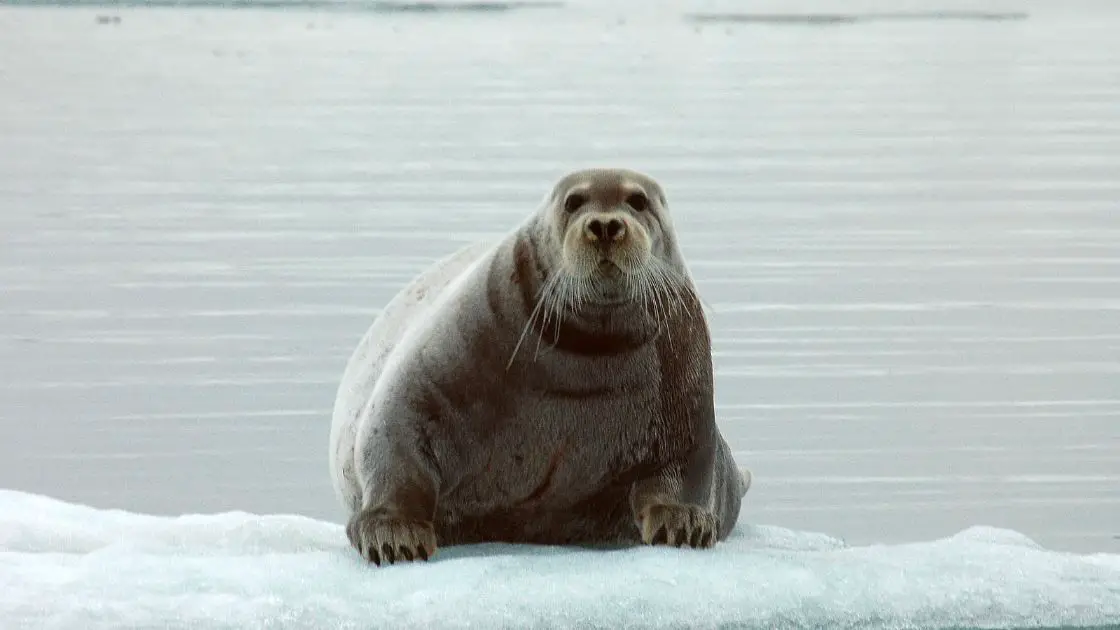
Ringed seals are the most common prey of polar bears and they are essential for the survival of the bears. They are able to catch them by waiting at the breathing holes of the seals in the sea ice.
Bearded seals
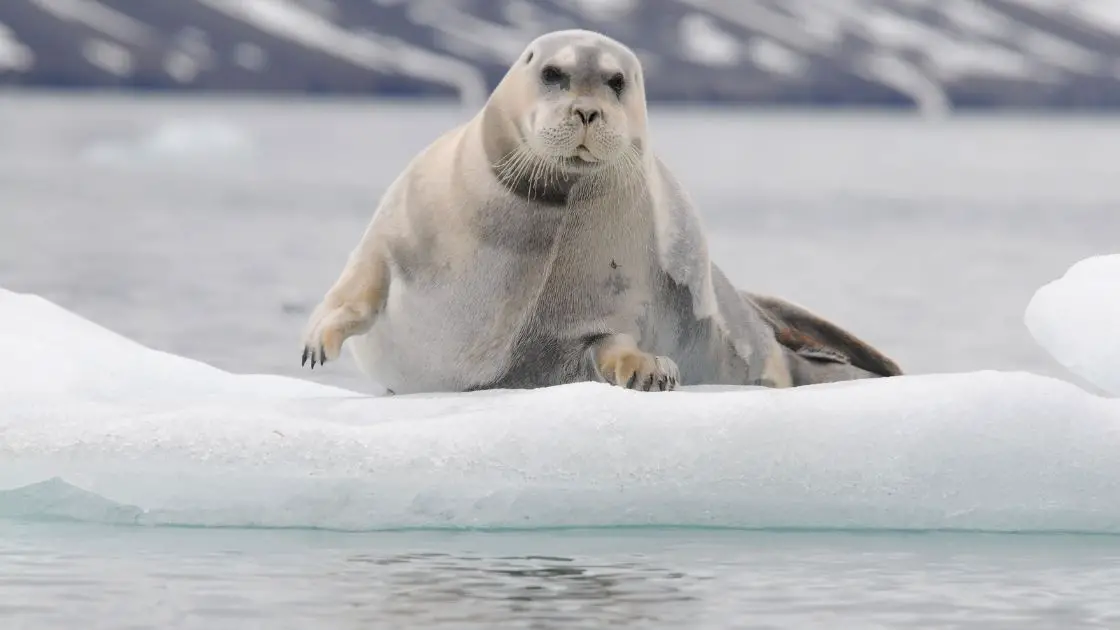
Bearded seals are also a significant part of the polar bear’s diet. These seals are hunted by the bears in the spring, when they come up to the edge of the sea ice to give birth and mate.
Walrus, beluga whales and narwhals
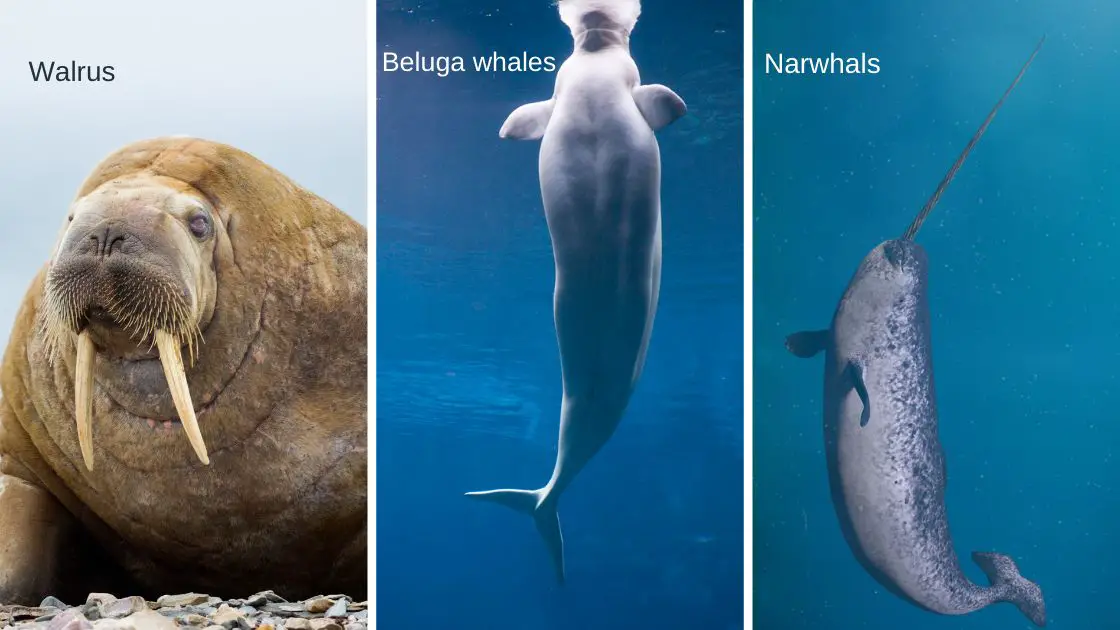
Walrus, beluga whales and narwhals are also part of the polar bear’s diet, but they are less common than seals. Walrus are hunted by the bears on the sea ice, while beluga and narwhals are hunted in the open water.
Fish & Sea Birds
Fish, such as Arctic cod, are also occasionally eaten by polar bears, but they are not a major part of their diet. Similarly, seabirds, such as guillemots and kittiwakes, are also occasionally eaten by polar bears but again they are not a major part of their diet.

Berries and other vegetation
In the summer, when sea ice is less extensive, polar bears may eat more berries and other vegetation, but this is not a significant part of their diet.
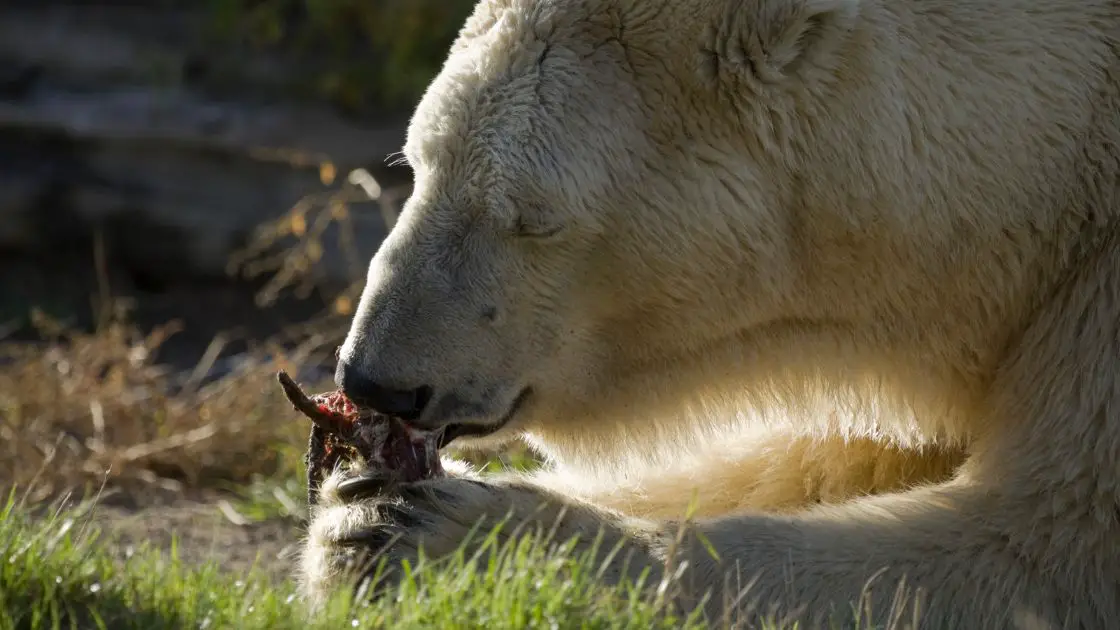
Polar bears are opportunistic hunters and will eat whatever food is available to them. They are known to scavenge on the carcasses of whales and walrus and even on human garbage in some areas.
What is polar bear favorite food?
The favorite food of polar bears is the ringed seal. These small and agile seals are the most common prey for polar bears and are vital to their survival. The bears are able to catch them by waiting at the breathing holes of the seals in the sea ice. Furthermore, ringed seals are also the most widespread seal species in the Arctic, making them a dependable food source.
Why do polar bears eat seals
Polar bears eat seals primarily because they are a high-quality food source that provides them with the energy and nutrients they need to survive in the harsh Arctic environment. Seals are a reliable and abundant food source for polar bears, and they are able to catch them by waiting at the breathing holes of the seals in the sea ice.
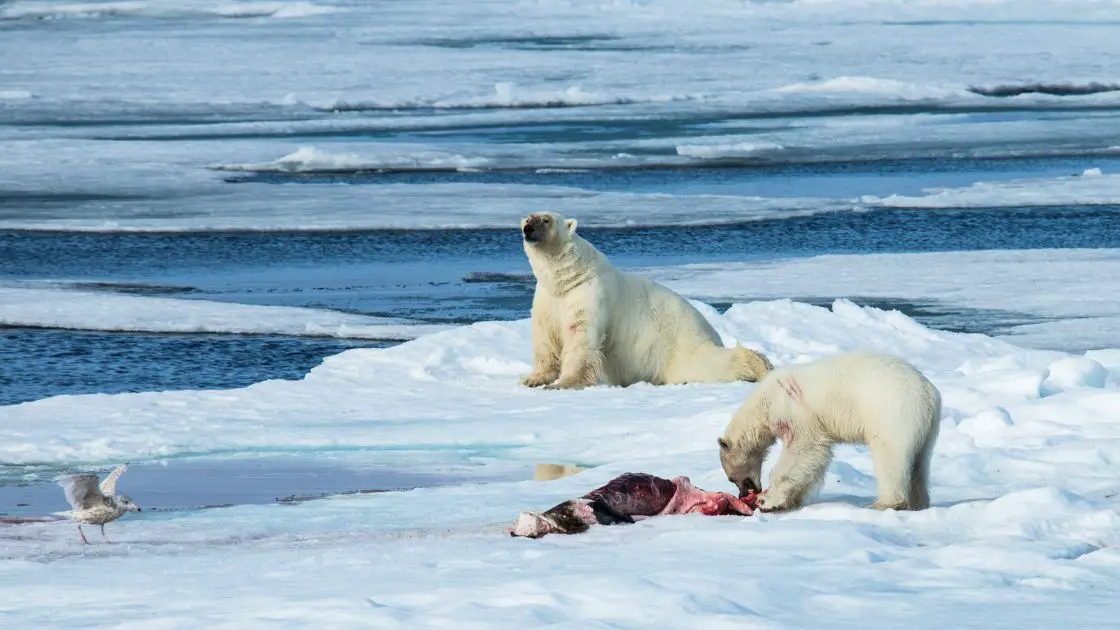
Ringed and bearded seals are the main prey of polar bears, and they are both rich in fat and protein, which are essential for the survival of the bears. The high fat content provides the energy they need to survive in the cold Arctic climate, and the protein is necessary for the growth and repair of their bodies. Additionally, seals are also an important source of water for polar bears, which allows them to survive in an environment where fresh water is scarce.
Polar bears are apex predators, and seals are at the top of their food chain. Seals are an important food source for polar bears, and it’s essential for their survival. Without seals, polar bears would not be able to survive in the Arctic environment.
What do polar bears eat in summer
In the summer, when sea ice is less extensive, polar bears may eat a more varied diet that includes food sources other than seals. The availability of food sources will vary depending on the location and the specific habitat of the polar bear.
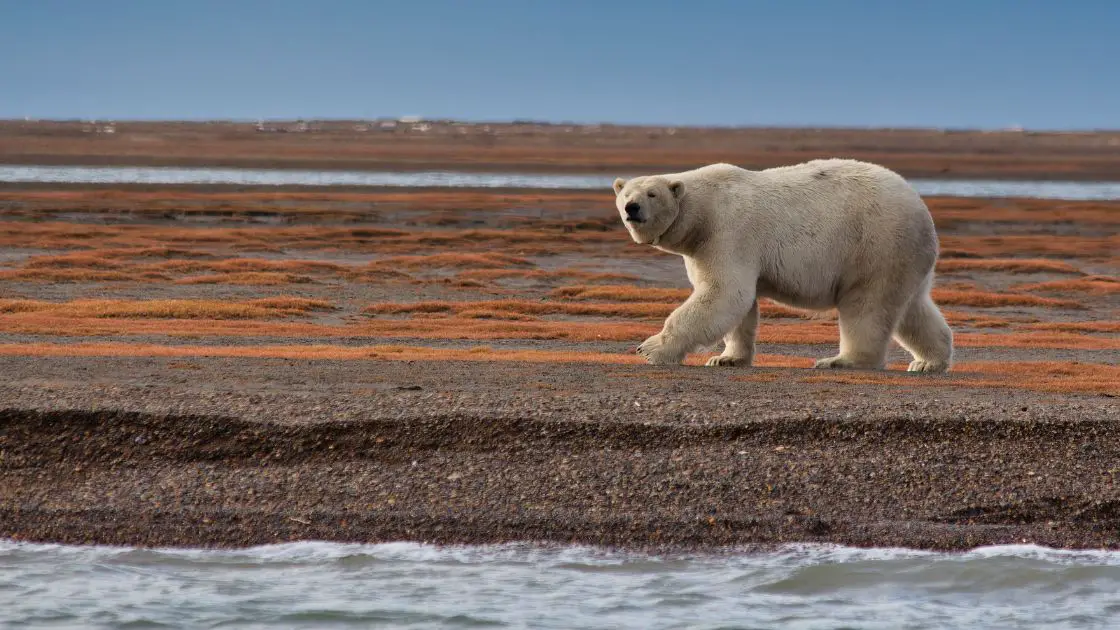
During this time of the year, polar bears may eat:
- Berries such as crowberries, cloudberries, and blueberries
- Vegetation such as moss, grass, and lichen
- Fish such as Arctic cod, and flounder
- Eggs and chicks of seabirds like guillemots and kittiwakes.
- Insects and other invertebrates
These food sources are not as rich in nutrients or fat as their preferred prey, the seals, and therefore do not provide the same level of energy and sustenance.
How much do polar bears eat
Polar bears are opportunistic predators and their diet can vary depending on the availability of food.
Adult polar bears can consume up to 15-20% of their body weight in one meal. A typical adult male polar bear can weigh around 600-700 kg (1300-1500 lbs) and can consume up to 100-140 kg (220-310 lbs) of food in one meal.
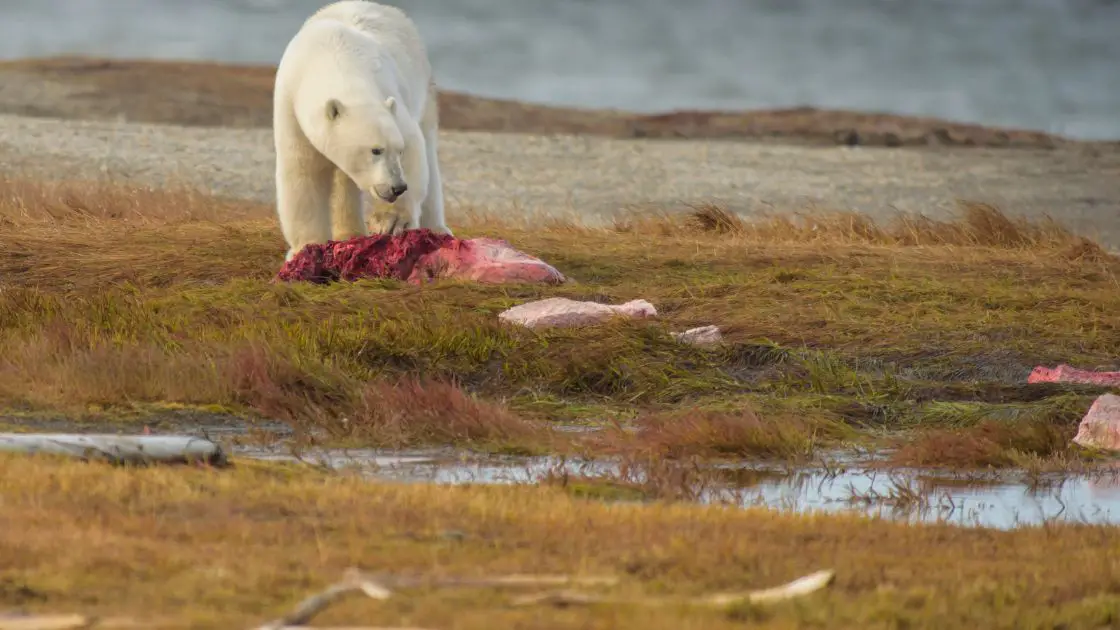
Adult females are generally smaller, weighing around 300-450 kg (660-1000 lbs) and can consume up to 50-70 kg (110-155 lbs) of food in one meal. However, these values can vary depending on the availability of food and the body condition of the bear.
During times of plenty, such as the spring and early summer when the sea ice is melting, bears can consume large amounts of food in a short period of time, building up fat reserves to sustain them through the leaner months when food is less available.
Polar bears are known to fast for several months at a time if food is not available, they can survive by living off their fat reserves.
How often do polar bears eat
Polar bears are opportunistic predators and their eating schedule can vary depending on the availability of food and their energy needs.
During the summer and fall, when food is more abundant, polar bears may eat more frequently, sometimes several times a day. They will consume large amounts of food in a short period of time to build up fat reserves to sustain them through the leaner months when food is less available.
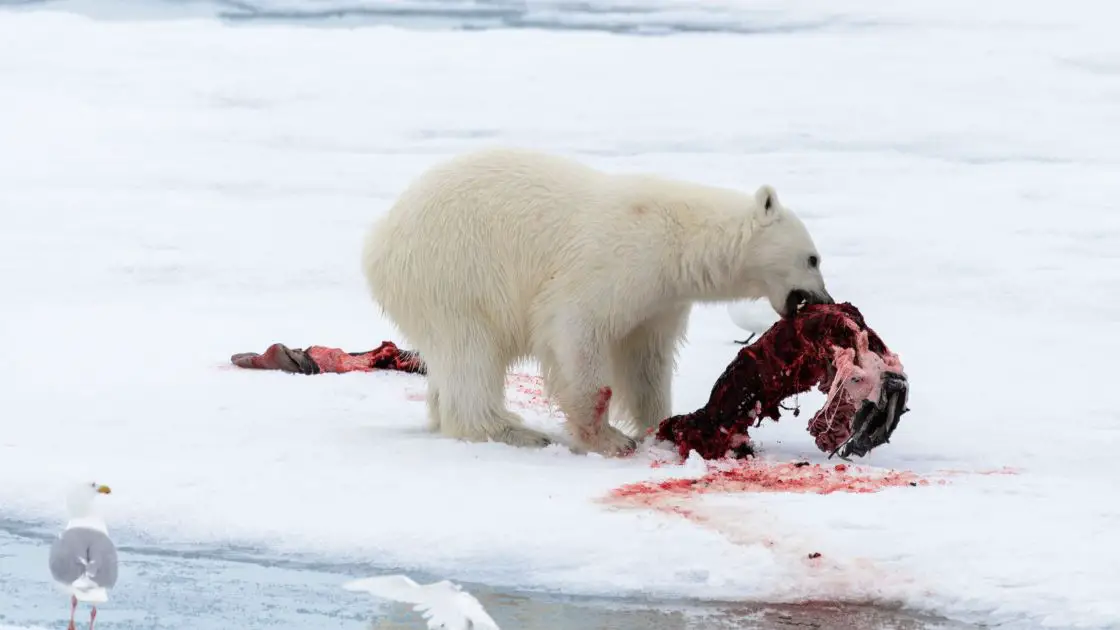
During the winter and spring, when food is scarce, polar bears may eat less frequently, sometimes only once or twice a week. They rely on their fat reserves to survive during these lean months.
What do polar bear cubs eat
Polar bear cubs typically begin eating solid food at around 6-8 months old. They are weaned by their mothers, who teach them how to hunt and find food on their own.
When polar bear cubs are first born, they are completely dependent on their mother’s milk for nutrition. Their mother’s milk is very rich in fat, which is essential for the cubs’ growth and development. They will continue to nurse from their mother for the first year or two of their life until they are able to find food on their own.
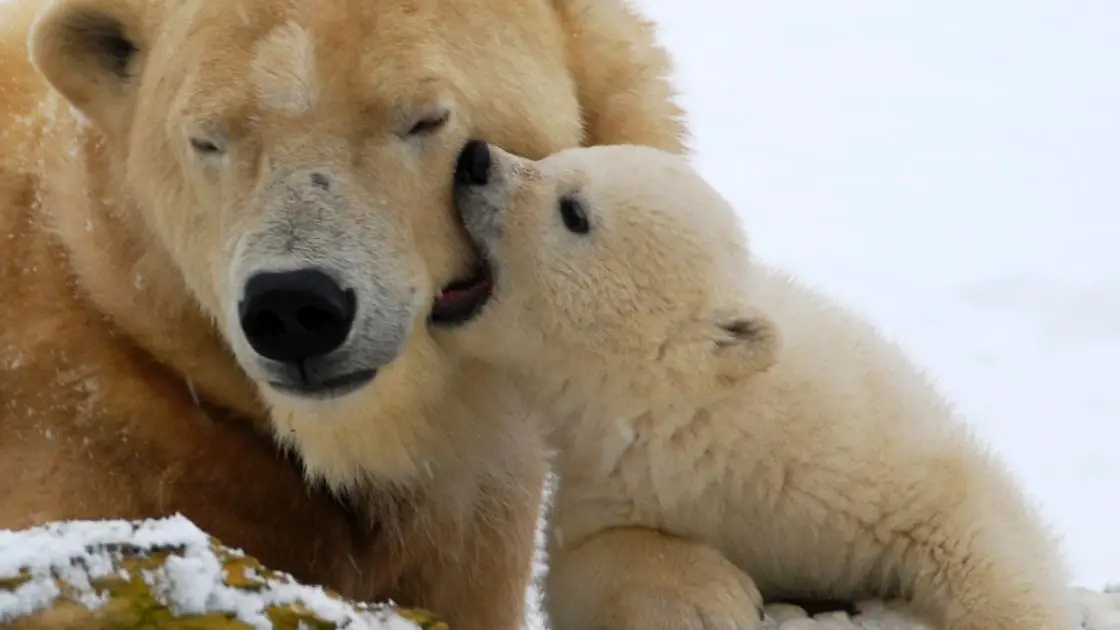
After weaning, polar bear cubs will start to eat solid food. They will start with small prey such as lemmings and other small mammals and gradually move on to larger prey, such as ringed and bearded seals. As they grow, they will learn how to hunt and catch their own food, and will eventually become independent.
Polar bear cubs have a high mortality rate, especially in their first year of life. Many cubs die due to starvation, predation or accidents. Therefore, it is essential for the mother to provide them with the necessary nutrition and teach them how to hunt and find food on their own in order to increase their chances of survival.
What do polar bears eat in captivity
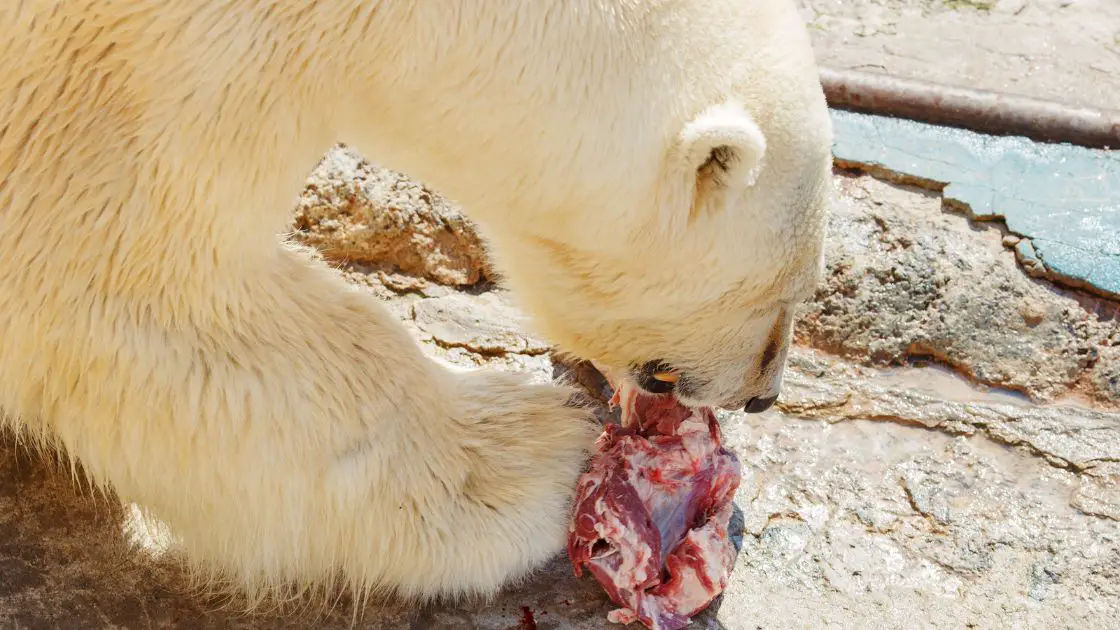
Polar bears in captivity are typically fed a diet that mimics their natural diet as closely as possible. This typically includes:
Meat
Polar bears in captivity are usually fed a diet of beef, horse meat, or a specially formulated carnivore diet that is high in protein and fat.
Fish
Some zoos may also offer fish as part of their diet, such as herring, capelin, or smelt.
Vegetables and fruits
To mimic their natural diet, some zookeepers may also offer vegetables and fruits such as carrots, apples, and leafy greens.
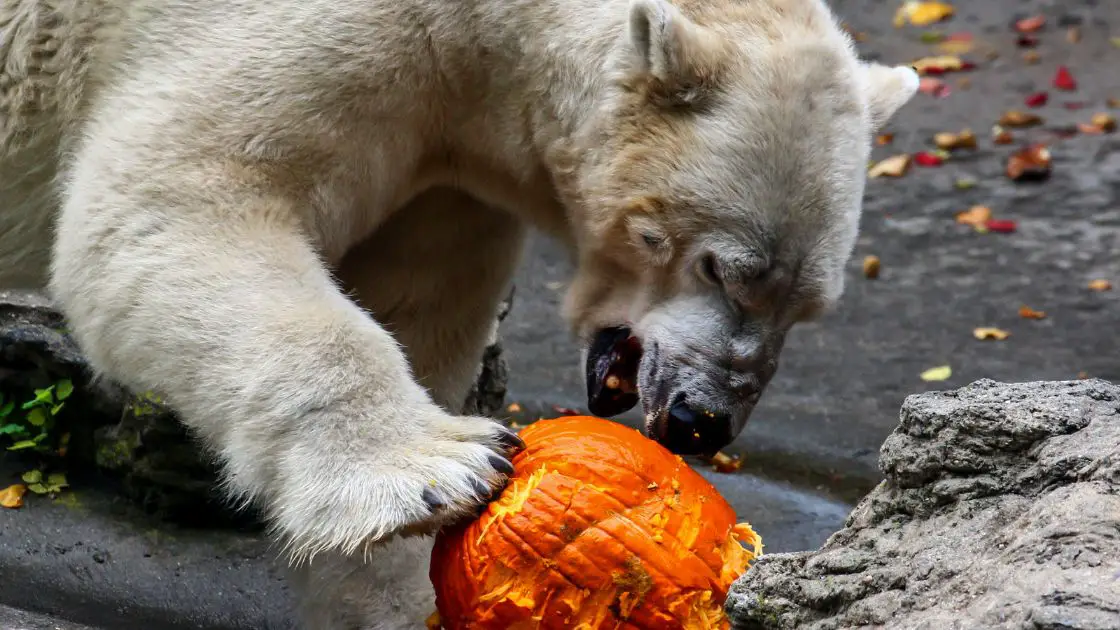
Supplements
Some zoos may also provide supplements such as vitamins and minerals to ensure the bears receive a balanced diet.
The diet of polar bears in captivity is different from wild polar bears diet in terms of the availability and the quality of food. Additionally, polar bears in captivity may eat more frequently than wild polar bears and they may be fed a diet that is high in calories to maintain their weight.
Captive polar bears are also known to consume non-natural food items like bread, processed foods, and even junk food, which are not part of their natural diet and can lead to health issues.
Do polar bears eat their cubs – Why do polar bears eat their cubs
Polar bears, like many other animals, will sometimes engage in infanticide, which is the killing of young offspring. However, it is not a common behavior among polar bears and there are many factors that may contribute to it.
One possible reason is resource competition, where a dominant male may kill the cubs of a female in order to bring her back into estrus and increase his chances of reproducing.
Another possible reason is nutritional stress, where a mother bear may kill and eat her cubs if she is unable to find enough food to support them.
It’s also important to note that some cases of infanticide reported in the wild may be due to mistaken identity, with cubs accidentally killed by adult bears in close proximity.
Infanticide is a natural behavior observed in many animal species, not just polar bears, and it’s not always a sign of maladaptation or poor health of the population.
Do polar bears eat penguins
No, polar bears do not eat penguins. Penguins are native to the southern hemisphere and are not found in the Arctic where polar bears live. Polar bears are found in the Arctic regions of North America, Europe, and Asia, while penguins are found in Antarctica and the southern hemisphere islands such as South Africa, Australia, New Zealand, and South America.
Do polar bears eat arctic foxes
Polar bears may occasionally eat arctic foxes, but they are not a significant part of their diet. Arctic foxes are small animals and are not as rich in fat and protein as polar bears’ preferred prey, such as ringed and bearded seals.
Do polar bears eat humans
While polar bears have been known to attack humans, such incidents are rare and typically occur when a bear perceives a person as a threat or if the bear is starving. It is important to remember that polar bears are wild animals and should be respected as such. It is best to avoid getting too close to them and to always take safety precautions when in polar bear country.
Do polar bears eat killer whales
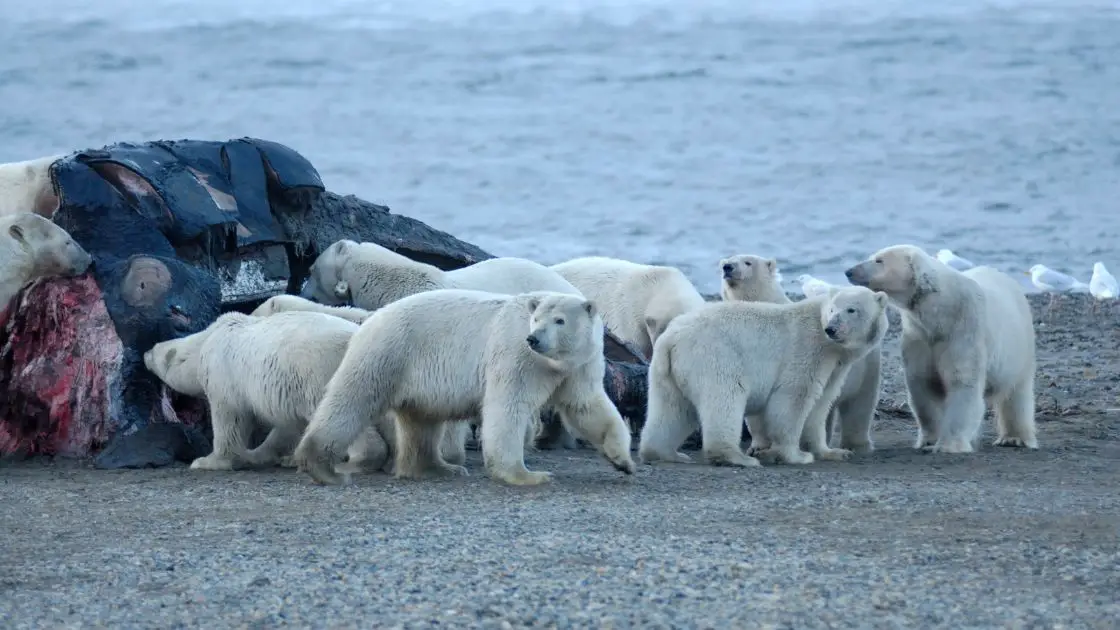
While they are apex predators in their Arctic habitat, they are not known to actively hunt or eat killer whales, which are much larger and more powerful animals. Killer whales (Orcas) are found in different oceanic habitats and are apex predator themselves, and they eat a wide variety of prey like fish, squid, sea lion, seals, and even larger mammals like whales and dolphins. It is possible that a polar bear might scavenge on a dead or injured killer whale, but it is unlikely that it would actively hunt one.

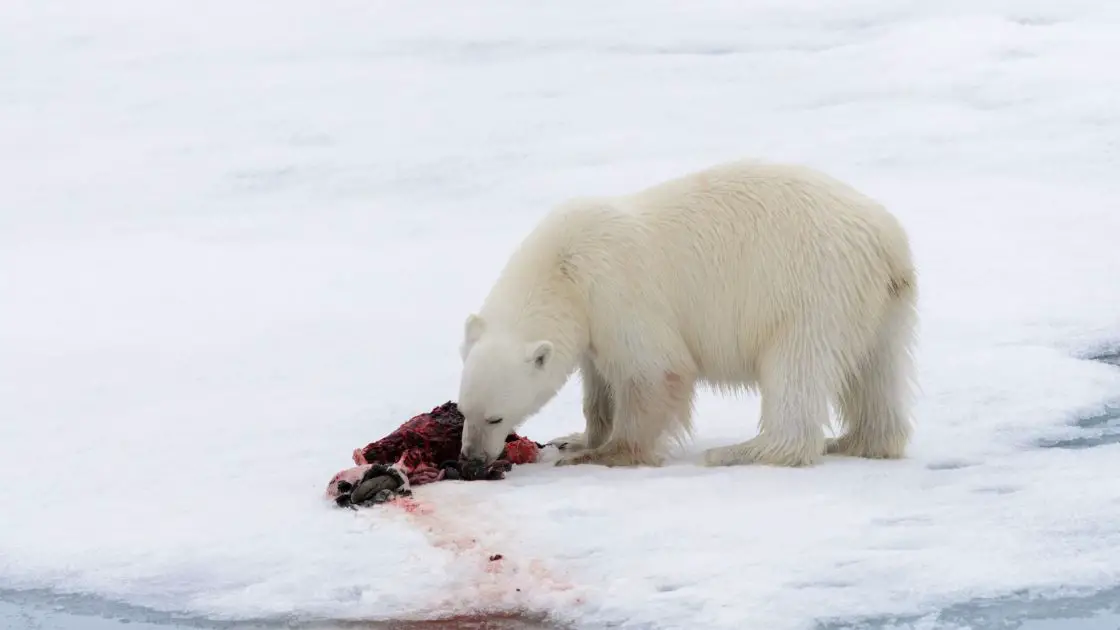





Leave a Reply